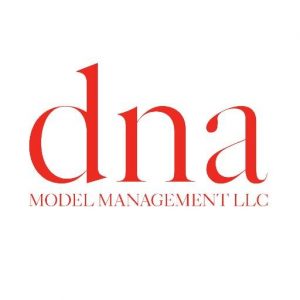I’m a great believer in luck, and I find the harder I work, the more
I have of it.
— Thomas Jefferson
For mainstream modeling the best way to get work is to have an agency find it for you. But if there are no good agencies where you live, or you haven’t been successful at getting represented, it is often possible to find a substantial amount of work on your own. Some models even make a living at it.
Preparation
If you are 5’6” tall or look like the girl next door you aren’t going to be an editorial fashion model, no matter how much you
might want it. You need to understand what kind of model you look like, and where models like you can find work. If you are
the edgy editorial type, you probably need to be in New York. If you are 5’8” tall and have classic, all-American good looks you may be able to model in any substantial city in America. Once you have decided on the kind of model you are, you need to tailor your marketing plan and materials to portray you that way, and be in a location where that kind of model is used.
You have to present yourself as a professional. Do the same things an agency model would: fine tune your appearance and get a good composite card printed in the style of the market you intend to go after. A commercial-print style comp isn’t a good choice if you want to be hired by a designer for a runway show; edgy editorial doesn’t work for Campbell’s soup. Depending on your look and type, you may want to make up more than one comp. If the culture of your city requires commercial print models to have a portfolio (New York, for instance, does not), or if you are targeting fashion jobs, you may need to have a good portfolio done as well.
Finding People Who Hire Models
In a smallish city there aren’t all that many potential clients — it’s literally possible to contact all of them. In a city like New
York or Los Angeles you can’t do that, but you can make targeted submissions. In larger markets advertising agencies usually do not do casting themselves (although a very small number still do). In smaller cities it’s less likely that there will be intermediaries like casting directors, so the ad agencies may be the ones to approach for a job. Usually in commercial print work the ad agencies aren’t interested in maintaining a list of models (that’s what agencies are for) and don’t want to see models except those that are suited for whatever ad they are working on at the time. Companies who do fashion-related advertising (such as large retail stores) may be interested in seeing fashion model independents, since they repeatedly use the same kinds of model in their ads. So you have to find people who actually hire models (small clients) — or client surrogates, like casting directors, who often keep models on file. Casting directors are listed in publications like The Ross Reports, or in Backstage, Variety and similar publications. In reading those listings you need to be careful to
identify the type of casting director, since many of them specialize in a particular kind of production. In major market cities, commercial and fashion photographers are very often the people who make the original casting choices (although the ad agency or client may make the ultimate decisions). Commercial photographers may not be in the “consumer” reference publications like the Yellow Pages. They often are found only in professional reference sources like Le Book or The Workbook, or in business-to-business yellow pages. Some magazines also take direct submissions from models. Models can get into Maxim and Stuff, for instance, by direct submission. Find the magazines you are interested in, read the masthead of the magazine, and send pictures to whoever seems to be the one who hires models. Typically that would be a photo editor. In smaller markets it often is a matter of personal relationships with the clients. Look on television and in the
newspaper and local magazines, find out who actually hires models, and find a way to meet them. Models looking to pose for artists may find them associated with university art departments, or local art galleries may have leads. Many photography schools also hire models for life drawing classes and student projects. It’s common for college students to take these jobs, but they are usually open to nonstudents as well. Models who want to do fashion work can get jobsd (although
usually low- or unpaid) through their local malls. It’s common for a mall to have a “teen board” or “fashion board” that will put on local fashion shows.
Finding Jobs
If you have gotten the attention of casting directors, commercial or fashion photographers or other people who cast for
advertising, they may call you when a job comes up that you are suited for. Maintaining the relationships (without being a pest) makes that likely to happen. But a lot of jobs will come from people you have never heard of. Some are advertised in normal consumer media like newspapers (classified ads), although that is uncommon these days. More often the jobs will be found on specialized Internet sites. Some opportunities are listed in the professional press (such as Backstage) or their websites (such as www.backstage.com). Others are listed in “online Yellow-pages” sites like Craig’s List (www.craigslist.com) – which also contains a high percentage of worthless “jobs”. There are also subscription websites that list casting notices for actors and models, although these tend not to be reliable and often just republish castings found from other sources. Those jobs also tend to be very low- or un-paid. Use of search engines such as Google (www.google.com) can likely locate a source of casting notices near you, if there is one. In some cities such as Los Angeles and New York there are services which specialize in taking casting breakdowns and publishing them to agencies. Normally these contain excellent jobs (often the best jobs), but they are heavily oriented towards acting, and have relatively little print modeling work in them. Since the early 1970s the predominant such company has been Breakdown Services, which used to fax breakdowns to agencies.
Now distribution is done on the Internet. You can find them at www.breakdownservices.com.
A little after the turn of the 21st century a different company, Casting Networks, Inc., took on a similar role in Los Angeles, and it has since expanded to New York and San Francisco. You can find them at www.lacasting.com, www.nycasting.com. Like Breakdown Services, the castings are heavily oriented towards acting and other entertainment fields, although there sometimes are print modeling jobs listed in them. Breakdown Services has strictly limited distribution of their data to talent agencies and other organizations qualified to receive them, and often have controls put in place to make sure others who get the information are found out if they use it. It has been commonplace for actors and models to get under-the-table access to this kind of information, but there are penalties for getting caught disseminating it without authorization. Casting Networks follows a somewhat different business model. They recognize, as Breakdown Services long has, that many clients and casting directors do not want to deal with the huge number of questionable responses they get from unrepresented models and actors. They allowed casting directors to limit distribution only to qualified agencies, to agencies and represented talent, or to general distribution. Breakdown Services has now set up a similar service: Actor’s Access, at
www.actorsaccess.com. Both companies also offer actors (and to a small extent, models) an online listing service. These have the advantage over other online listing sites that casting directors and agencies are familiar with them, know how to use them, and they add legitimacy to the talent shown there. There is a final source of jobs on the Internet:
professionally-oriented modeling sites like www.models.com, www.onemodelplace.com and www.modelmayhem.com have forums where jobs can be posted by members. www.models.com also has general discussion forums that are read by agents and clients. Models who make positive, constructive contributions on the forum can sometimes be given work as a result; models who behave badly can find they lose jobs and representation. It’s a resource that must be used judiciously.
Pricing Your Services
One of the hardest things a new, unrepresented model has to deal with is price. Someone is interested in hiring her. How
much should she charge? Agencies deal with this question every day, and even they have trouble with it. There isn’t a clear-cut answer to what a job should pay in many cases. Here are some considerations used in determining what to ask for:
“Market Rates” The “standard” rate for commercial modeling varies by city, but it can be expected to be anywhere from $100-$250 an hour for commercial print and fashion print work. In cities with only one real modeling agency rates are normally higher than when there are several good agencies for a client to choose from. There may be an additional “bonus” for usage rights, depending on how the pictures will be used. The “bonus” often can be larger than the hourly rate for widely distributed consumer advertising. Promotional modeling may pay $10-$30 an hour for unrepresented models. Artists modeling rates are similar. Children generally get half the adult rate for modeling. A self-marketing model should know “standard” rates, but also recognize that if the client is deliberately seeking only unrepresented models for the project, it’s very likely they don’t intend to pay agency-standard rates. The “standard” may have to be cut in half or even less. On the other hand, if you are competing with agency models for the job, normal market rates apply, and it’s unlikely that a client will hire you simply because you are cheaper than other applicants.
The Client
The single most important factor in what a job pays is who is paying for it. An international pharmaceutical company or highprofile cosmetics company is likely to pay “market rates” (or more). Frank’s T-Shirt Shop isn’t. If Mandy’s Bridal Boutique wants to use a picture in a local magazine she may want to pay you $100, where a major manufacturer may pay thousands of dollars for a more widely distributed shot of you in their dress.
The Budget
Experienced clients on most commercial jobs have a rate they expect to pay. If you ask, they will tell you. Normally there
is little negotiating room in that budget, unless you have an unusually strong bargaining position for some reason.
Advertising or Editorial?
Advertising pays more than editorial. “Editorial rates” are typically $100-$250 per day for large publications, and may be
less or even zero for smaller ones. High prestige fashion magazines pay less than general interest magazines, because they
assume a tearsheet from them is of great value to the model. For non-fashion models appearing in their editorials that may not be true, but their rates still won’t change.
Experienced or Not?
Generally commercial print jobs pay a new model on her first professional shoot the same rate as the veteran of a hundred paid jobs. Small, inexperienced clients will use a model’s inexperience as a bargaining chip, but the larger clients will not.
Inexperienced models are less likely to win the job, but if you win it, you don’t suffer in your paycheck. Fashion jobs are different. Clients are accustomed to paying a model a sliding scale depending on experience and market acceptance. When starting out you are at the bottom of the scale. Even so, if you get picked up for a national campaign by a household name designer, you ought to make a very hefty paycheck even if you’ve never modeled before.
Exclusivity Clause
(Note: This is NOT the same as an exclusivity agreement between a model and a model agency.) Some jobs require an “exclusivity clause” which keeps you from working for a competitive product for the period stated. These may be specific to a narrow product type (“ophthalmic pharmaceuticals”) or quite broad (“office products”). Because these clauses keep you from making money advertising for any of those things, they pay very well. It’s not unusual for a narrowly written exclusivity agreement to pay over $1,000 for a year, and a broadly worded one (“no pharmaceuticals”) can pay $20,000 a year or more.
Should You Take a Low Paid or Unpaid Job?
It’s tempting for new models to take any offered job regardless of pay. Modeling jobs offer experience, networking opportunities and tearsheets that are valuable later in your career. But:
1. Not all networking (or “exposure”) is equal. Working with marginal players and one-time clients on jobs that pay little
or nothing may do no good at all to raise your value to other clients, and may only “expose” you to more opportunities
for similar low- to no-paying work. Make sure the people you are dealing with actually have professional experience
and standing.
2. Not all tearsheets are good. Jobs for Internet advertising, except possibly for major corporations, have no value as
tearsheets. Small, cheesy ads for small, cheesy companies aren’t something you would want to put on your card or in
your book either. “Will this present me well?” is a question you need to ask yourself before accepting unpaid or low
paid jobs.
3. Conflicts. If you take a job for one client you may disqualify yourself from working for a later client. Doing an ad for the local Mary Kay distributor could cost you a high-paying job with Revlon – but it probably won’t if you are in Topeka. Consider likely conflicts before accepting work.
Getting Paid
A model without an agency has to do his own billing, bookkeeping and collections; he may not get paid for weeks or
months after he does a job. He may ask that he get paid at the end of the job. But that puts a burden on the client that many may find unacceptable, and it could cost a model jobs. The model needs to use the documents and procedures that agencies use to get models paid. To do that he has to create forms such as a voucher (a sample is in the Appendix) and invoices. Sometimes it’s worse than that. If a client refuses to pay, the model has to collect. He doesn’t have the clout that an agency does, and may not get the respect from an accounts payable department that a lawyer or agent would. At worst, that may mean the model has to learn skills like filing and pursuing a case in Small Claims court.
Although an agency may send models to jobs based solely on telephone calls, a self-marketing model would be wise to have
everything in writing before the job begins:
1. What is the nature of the job?
2. Who is the client?
3. Where and when is he to report?
4. How long will the job last, and what happens (overtime?) if it goes beyond that?
5. What is the session fee?
6. What is the usage and duration, and what fee is being paid for it?
7. When is payment due?
If all of those things are in writing before a job, the model stands a good chance of being able to collect if things start to go
wrong. One thing a self-marketing model needs that an agency model does not: a fax machine to send and receive those
documents.






